A trio of late summer's nocturnal choristers
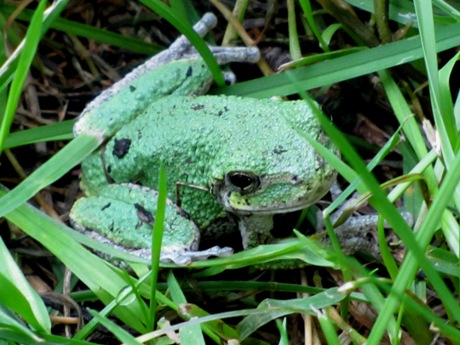
Don't let the green-color phase fool you. This gray tree frog normally lives high in the trees and descends at night only to chorus or breed. He doesn't have a far reaching call; it's more like a soft trill.
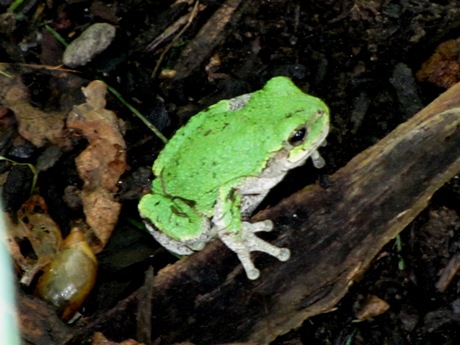
Unlike its web-footed cousins, tree frogs have toe pads, appendages with an adhesive-like quality that great enhances their climbing and clinging skills.
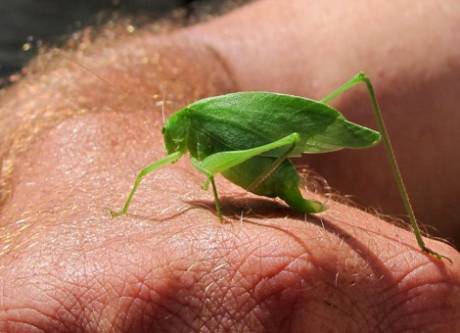
Katydids are nocturnal and, for the most part, tree dwellers. Rarely seen but heard on any warm evening in August and September, katydids don't have a voice, but instead create their noted sound - kaytdid, kaytdidn't - by rubbing part of their wings or legs together.

A good example of why the katydid is difficult to spot. They've been sounding off with exuberance for the last week or so, a reminder that autumn is nigh.
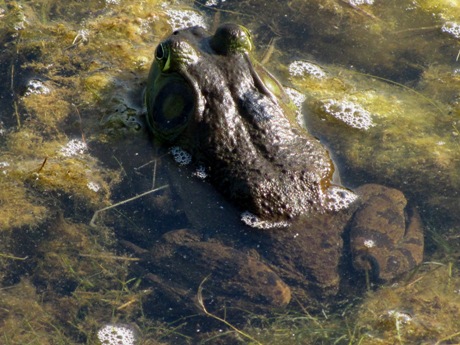
The largest of North Americn frogs, the bullfrog, has a far-reaching call that is said to be heard for more than a quarter mile. And I can attest to that. I can easily recall lying in my bunk at Y camp and hearing the bullfrogs "talking" non-stop, their call carrying across the water from the swamp at the south end of the lake.
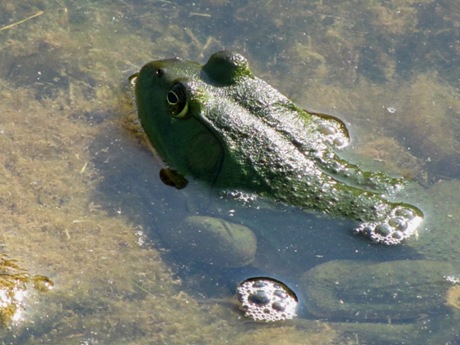
As you can see, the bullfrog's shade of green will vary. Both frogs pictured in this post are indeed fortunate fellas. Both live in very close proximity to the two water snakes you may have read about in my last post.
I've enjoyed the sound produced by the critters pictured here since childhood. Add to the list many others...loons, owls, migrating geese, etc. Nature's nocturnal sound is limitless...and I can't say I have a favorite. I enjoy them all -- with one exception -- the buzzing of a mosquito!
